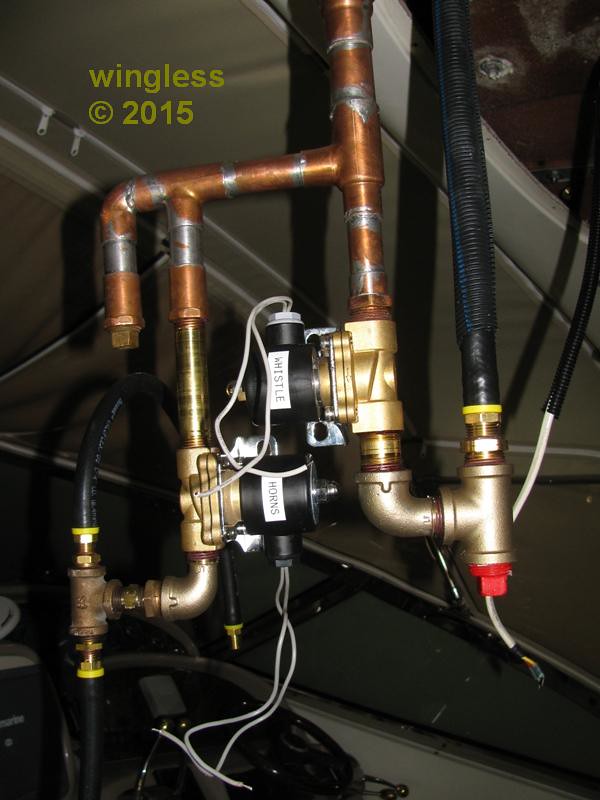Interesting subject here. You need enough PSI+CFM to maintain the proper operating pressure within the power chamber of each bell-unit, this varying by horn model.
H/M-series will sound best and at factory loudness by maintaining 20-25PSI in each operating power chamber. If preload too light then more air used, less sound produced.
K-series will sound best at 14-19 PSI per operating power chamber.
C-series sounds best at 12-14 PSI per operating chamber, and like the H/M above, PSI will also depend on diaphragm preload.
P-series is variable, as you know they will operate on low PSI and CFM very well.
Note that this is the maintained PSI in the power chamber with the horn in operation and the diaphragm oscillating at its intended frequency.
Best way and told to me by the old man: Valve right at or very close to horn.
Bad…long length of line between valve and horn, and depending on model, run-on will occur, short for H/M-series, longer for K-series, especially generation 1 & 2, and longest on the C-series and miserly P-series.
Whistles blown on compressed air are mostly like stated above by Wingless, they represent an open outlet on the receiver, so the bigger the whistle, the larger receiver is needed to blow. Not so on steam, since the super-heated water in a boiler flashes into steam the moment the boiler pressure declines, hence practically unlimited blowing medium and why you can blow a big locomotive whistle on a very small boiler.
Anyhow, for blowing purposes for my rig-in-design-stage, I have developed and had made a 3-1/2" diameter 5-chime steptop whistle, all bronze WIV and lever. Valve opening is 1/2", same as horn. This whistle has a long enough cut-up to be quite loud for its size, perfect to use in traffic because its volume is about the same or a little louder than a standard electric car horn. But it is the sound I like, it blows the exact same five notes as the K5H/K5L horn, so along with not being too loud to startle people driving, it is also very melodious.
We tried blowing my Reading passenger 6-chime whistle on the Outlaw rig, but just one quick toot from the 80 gallon surge receiver, then the nitrogen was exhausted! So I have learned to make the air-blown whistle smaller ID, 1/2" inlets and high enuff cut-up to blow on 120 or so PSI and generate pure notes with no overblowing.
Fun stuff.
